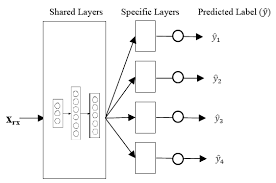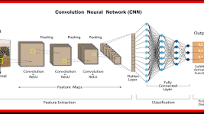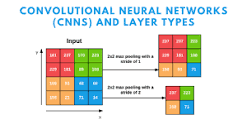Understanding Multi-Task Neural Networks: A Comprehensive Overview
In the rapidly evolving field of artificial intelligence, neural networks have become a cornerstone technology for a wide range of applications. Among the various types of neural networks, multi-task neural networks (MTNNs) have gained significant attention due to their ability to perform multiple tasks simultaneously, improving efficiency and performance.
What Are Multi-Task Neural Networks?
Multi-task neural networks are designed to handle more than one task at the same time by sharing representations across these tasks. Unlike traditional single-task models that focus on a specific objective, MTNNs leverage commonalities between tasks to enhance learning and generalization. This is achieved by having shared layers in the network that learn features useful for all tasks, along with task-specific layers that fine-tune these features for each individual task.
How Do They Work?
The architecture of a multi-task neural network typically consists of three main components:
- Shared Layers: These layers capture the common features and patterns across all tasks. They form the backbone of the network and are trained using data from all tasks.
- Task-Specific Layers: For each task, there are dedicated layers that take inputs from the shared layers and focus on optimizing performance for that particular task.
- Loss Functions: Each task has its own loss function, which is used to update both shared and task-specific parameters during training. The overall loss is often a weighted sum of individual losses.
The Advantages of Multi-Task Learning
The use of multi-task neural networks offers several benefits:
- Efficiency: By sharing representations across tasks, MTNNs reduce redundancy and computational resources compared to training separate models for each task.
- Improved Generalization: Learning from multiple related tasks helps in capturing more robust features, leading to better generalization on unseen data.
- Avoidance of Overfitting: Sharing information between tasks acts as a regularizer, helping prevent overfitting on any single task.
Applications of Multi-Task Neural Networks
The versatility of MTNNs makes them suitable for various applications across different domains:
- NLP (Natural Language Processing): Tasks such as sentiment analysis, part-of-speech tagging, and named entity recognition can be jointly modeled using MTNNs.
- Computer Vision: Simultaneous object detection and segmentation can benefit from shared visual representations in an MTNN framework.
- Sensing Systems: In autonomous vehicles or IoT devices where multiple sensor readings need simultaneous interpretation, MTNNs provide an efficient solution.
The Future of Multi-Task Neural Networks
The ongoing research in multi-task learning continues to push boundaries by exploring new architectures and optimization strategies. As AI systems become more complex with diverse functionalities, MTNNs will play an increasingly vital role in creating intelligent systems capable of handling multifaceted challenges seamlessly.
The potential for multi-task neural networks is vast, offering exciting opportunities for innovation across industries. As technology advances further, these models will likely become integral components in developing smarter and more adaptable AI solutions.
This article provides an introductory look at multi-task neural networks. For those interested in diving deeper into this topic, numerous academic papers and online resources are available that explore advanced concepts and practical implementations in greater detail.
7 Essential Tips for Optimizing Multi-Task Neural Networks
- 1. Use appropriate activation functions for each task in the multi-task neural network.
- 2. Consider using task-specific loss functions to train the network effectively.
- 3. Regularize the network to prevent overfitting on individual tasks.
- 4. Design a shared feature extractor to capture common patterns across tasks.
- 5. Balance the importance of each task by adjusting their respective loss weights.
- 6. Monitor and analyze performance on each task separately to identify areas for improvement.
- 7. Experiment with different architectures and hyperparameters to optimize multi-task learning.
1. Use appropriate activation functions for each task in the multi-task neural network.
When implementing a multi-task neural network, it is crucial to carefully select and utilize appropriate activation functions tailored to each specific task within the network. Activation functions play a significant role in determining the non-linear behavior of neurons and directly impact the network’s learning capability and performance. By choosing activation functions that are well-suited for the characteristics of individual tasks, such as ReLU for some tasks and sigmoid for others, one can optimize the network’s ability to effectively capture task-specific patterns and improve overall learning efficiency and accuracy.
2. Consider using task-specific loss functions to train the network effectively.
When working with a multi-task neural network, it is crucial to consider using task-specific loss functions to train the network effectively. Task-specific loss functions play a vital role in guiding the learning process for individual tasks within the network. By tailoring the loss function to each task’s objectives and requirements, the model can optimize its performance more efficiently and accurately. This approach helps ensure that the network focuses on learning task-specific features and nuances, ultimately leading to improved overall performance across all tasks.
3. Regularize the network to prevent overfitting on individual tasks.
To prevent overfitting on individual tasks in a multi-task neural network, it is crucial to regularize the network. By applying regularization techniques such as dropout, weight decay, or early stopping, the model can effectively control the complexity of the shared and task-specific layers. This regularization helps prevent the network from memorizing noise or irrelevant patterns specific to one task, ensuring that the model generalizes well across all tasks and performs optimally on unseen data. Regularizing the network is essential for maintaining robust performance and improving overall efficiency in multi-task learning scenarios.
4. Design a shared feature extractor to capture common patterns across tasks.
When implementing a multi-task neural network, it is crucial to design a shared feature extractor that can effectively capture common patterns across all tasks. By creating this shared component in the network architecture, the model can learn and leverage general features that are beneficial for multiple tasks. This shared feature extractor acts as a foundation for the network, enabling efficient information sharing and enhancing the overall performance and generalization capabilities of the multi-task neural network.
5. Balance the importance of each task by adjusting their respective loss weights.
In the realm of multi-task neural networks, a crucial tip is to carefully balance the significance of each task by adjusting their individual loss weights. By assigning appropriate weights to the loss functions of different tasks, researchers can effectively control the influence of each task on the overall learning process. This strategic adjustment ensures that all tasks contribute optimally to the network’s training, preventing any single task from dominating the learning process and allowing for a harmonious integration of multiple objectives within the model.
6. Monitor and analyze performance on each task separately to identify areas for improvement.
Monitoring and analyzing the performance of each task separately in a multi-task neural network is crucial for identifying specific areas that may require improvement. By closely examining the individual task performances, developers can gain insights into where the model excels and where it may struggle. This targeted approach allows for fine-tuning of task-specific layers and parameters, leading to enhanced overall performance and better optimization of the network as a whole.
7. Experiment with different architectures and hyperparameters to optimize multi-task learning.
To optimize multi-task learning, it is crucial to experiment with various architectures and hyperparameters. By exploring different network structures and tuning hyperparameters such as learning rates, batch sizes, and regularization techniques, researchers and practitioners can fine-tune the performance of multi-task neural networks for specific tasks. This iterative process of experimentation helps in identifying the most effective configurations that maximize learning efficiency and generalization across multiple tasks.




